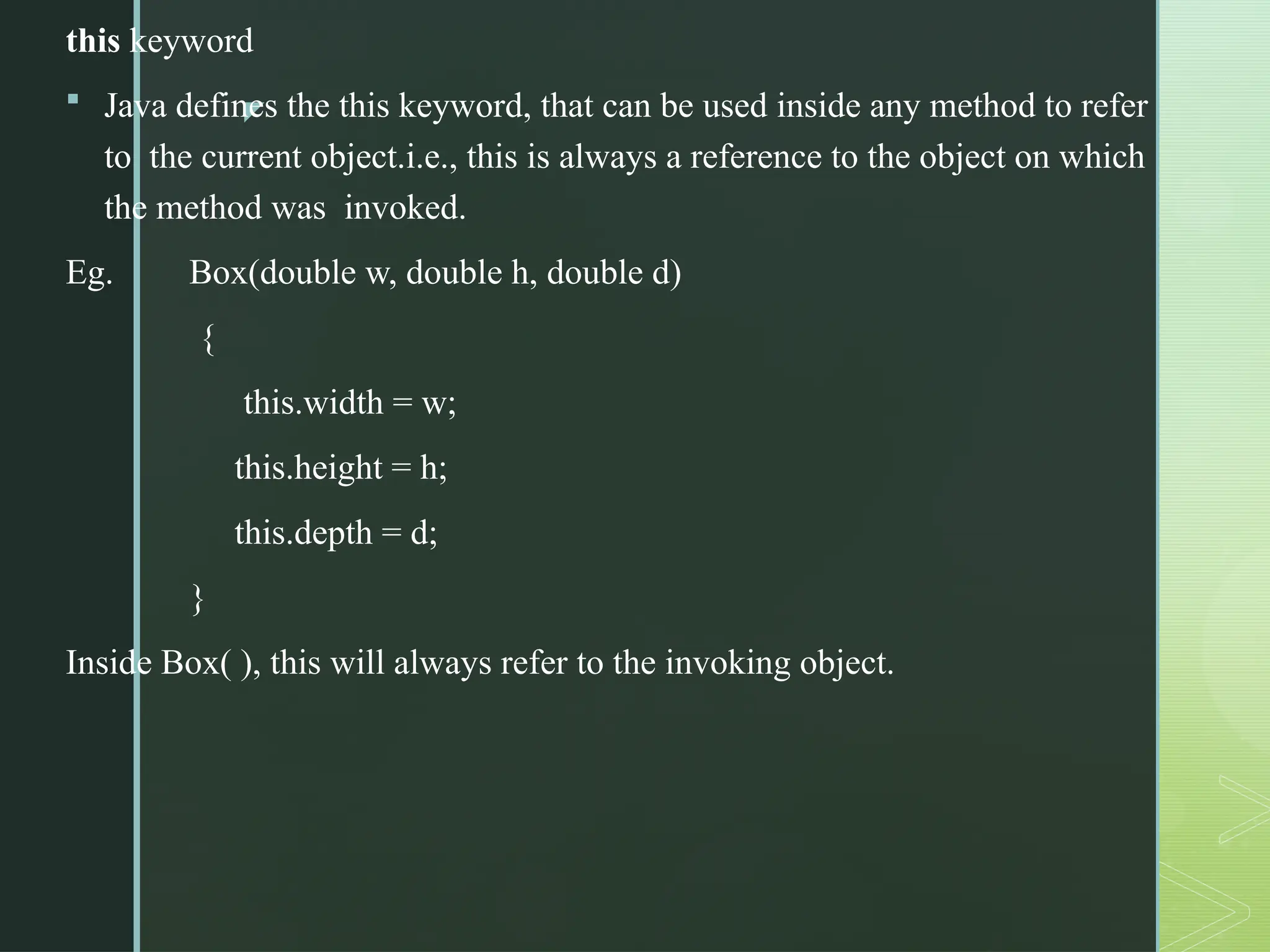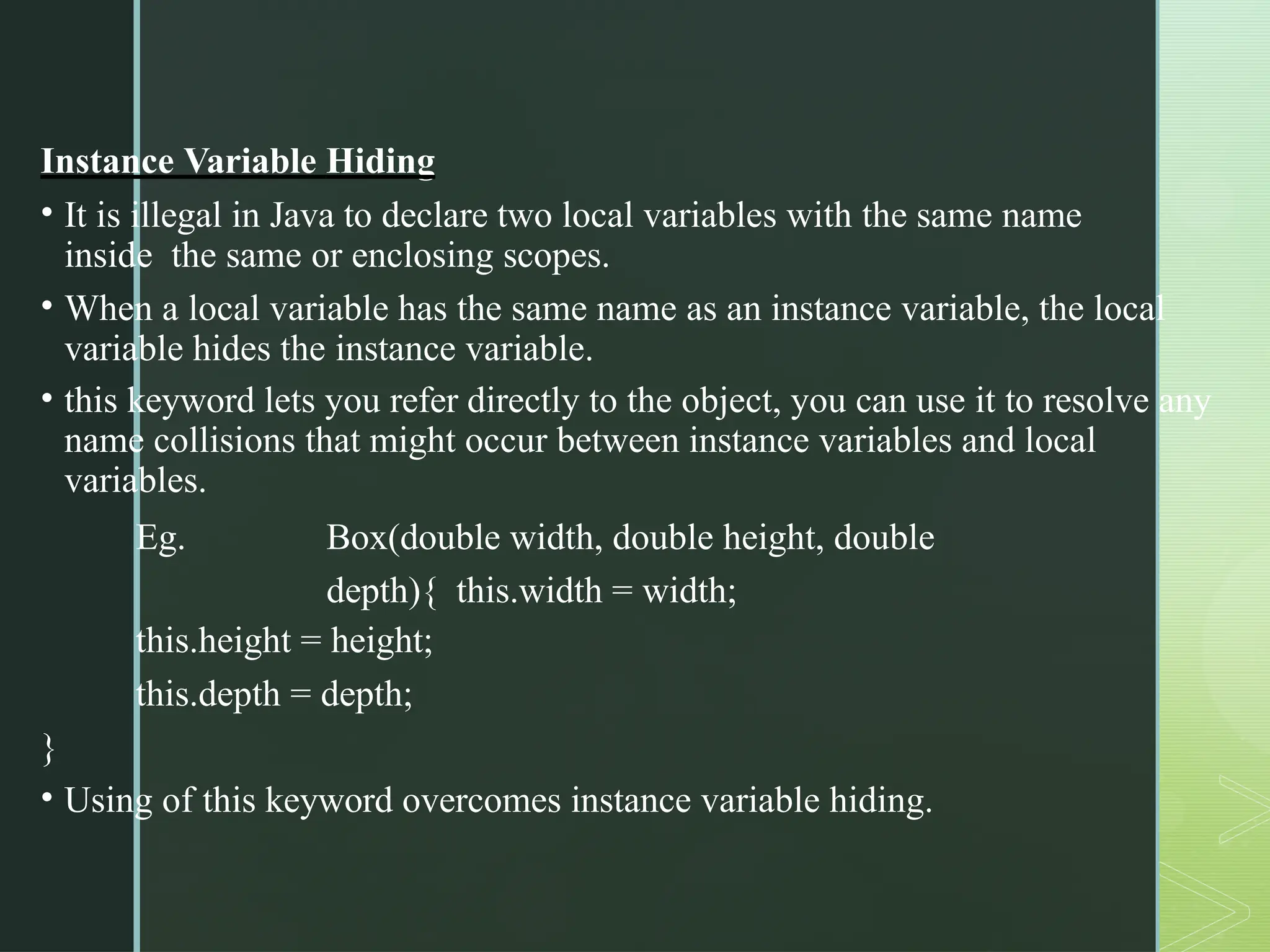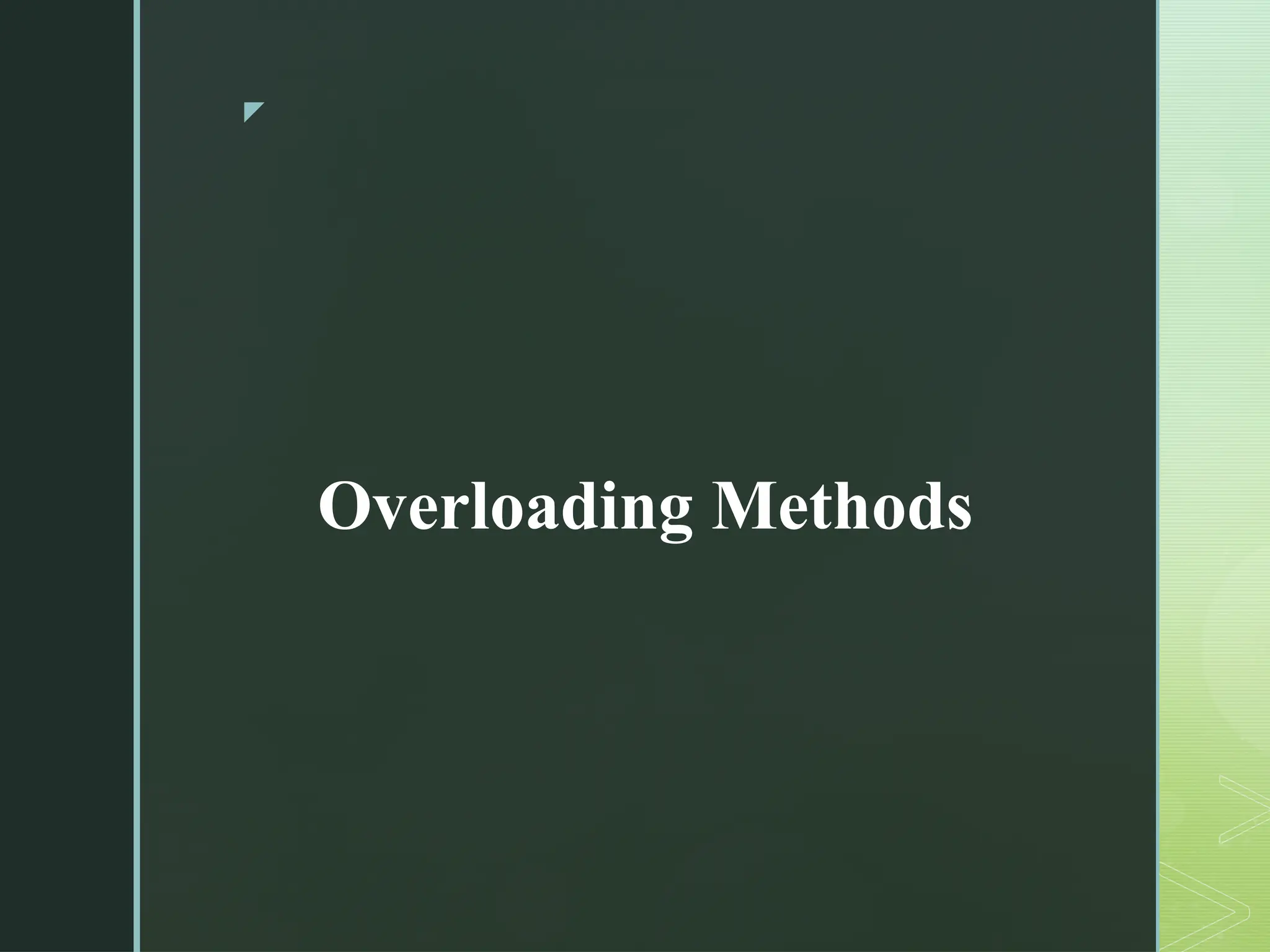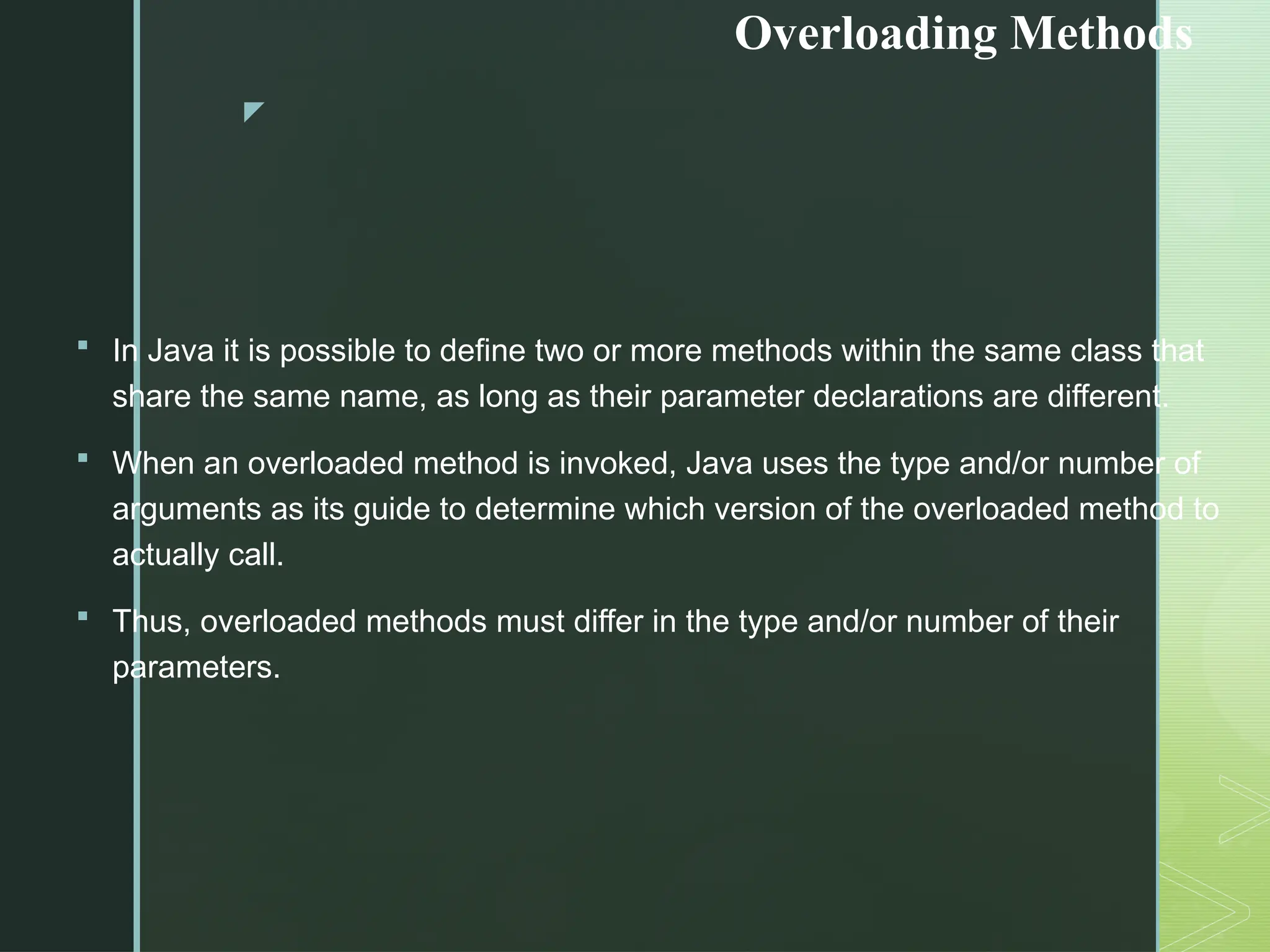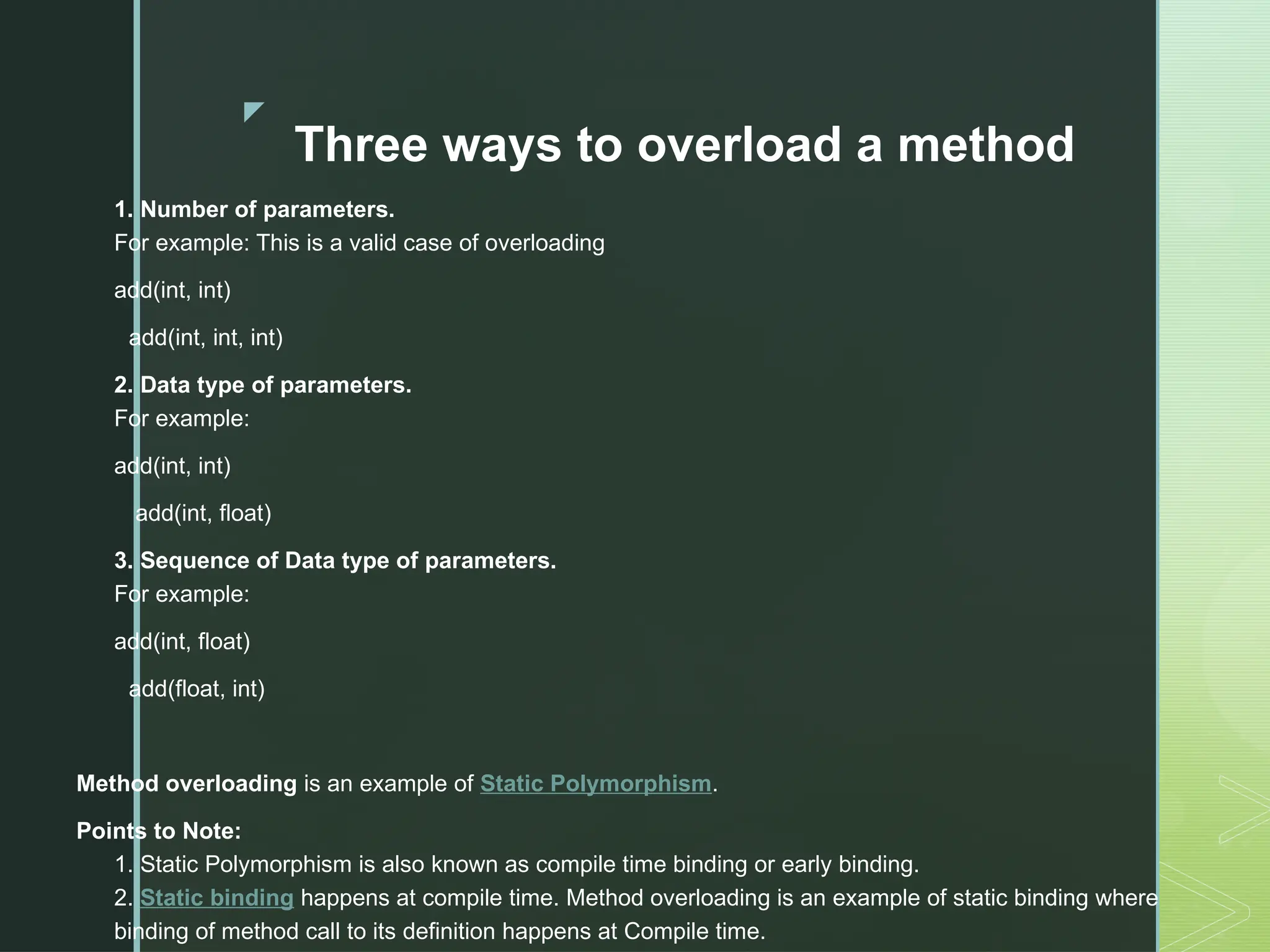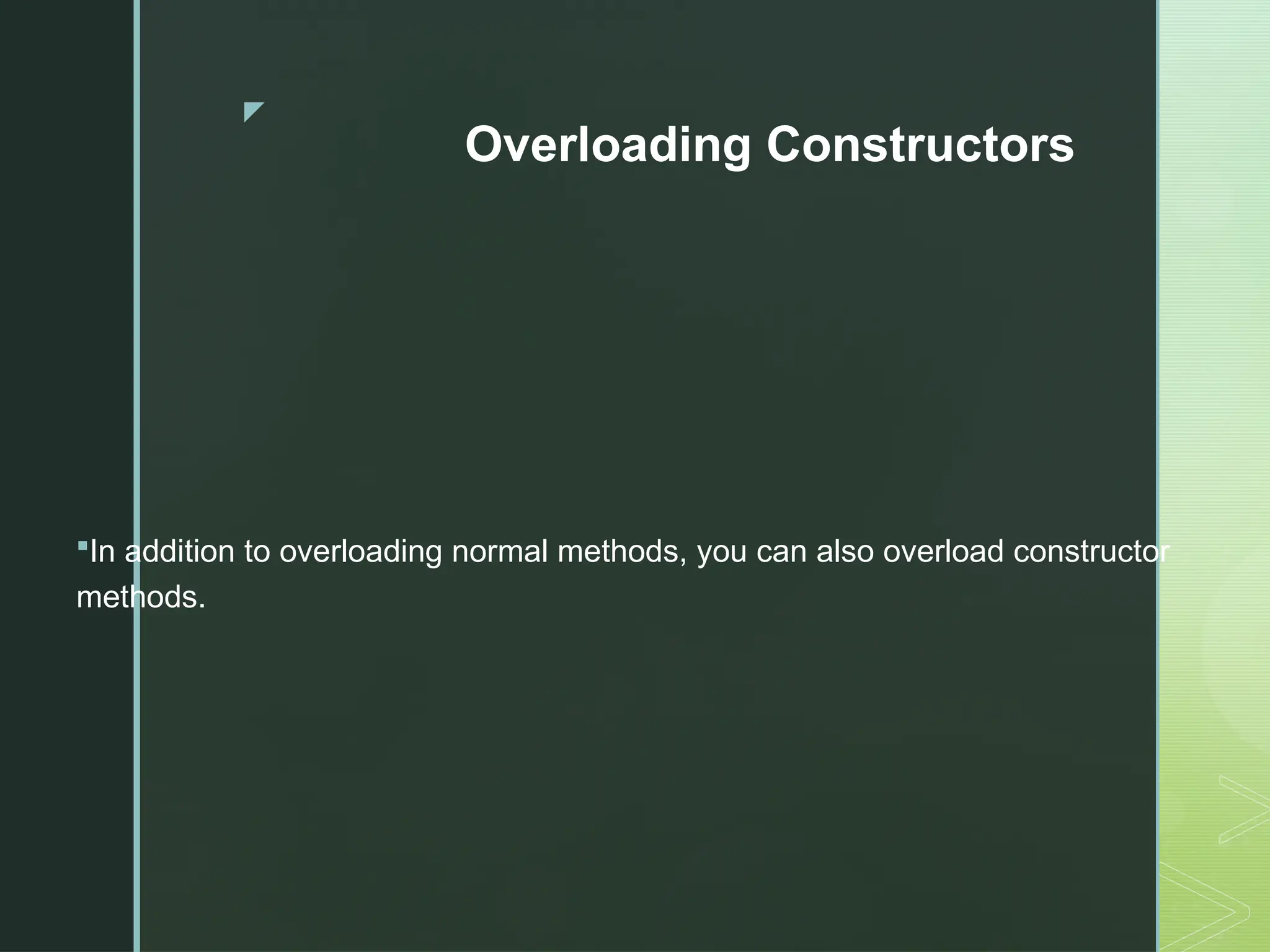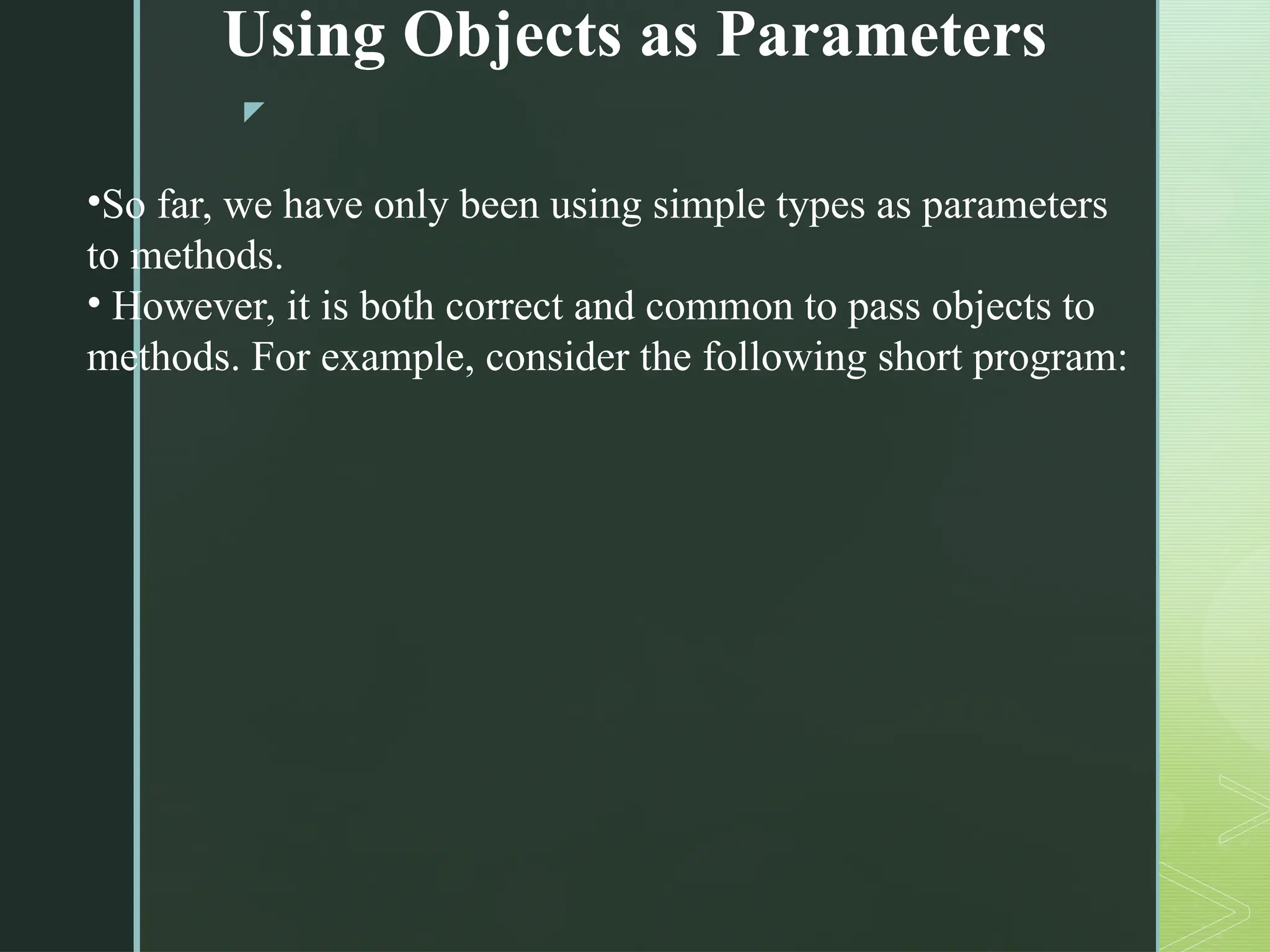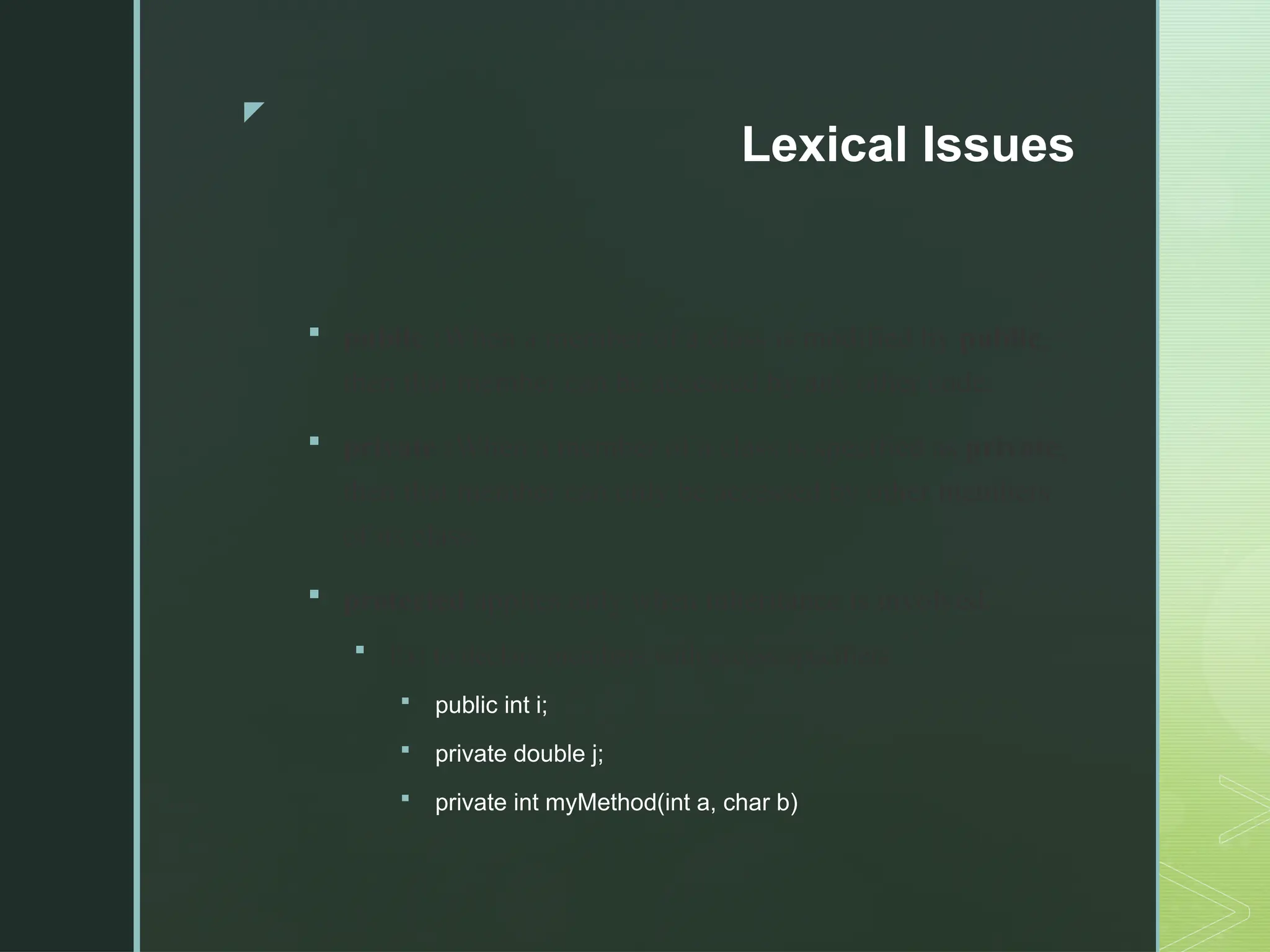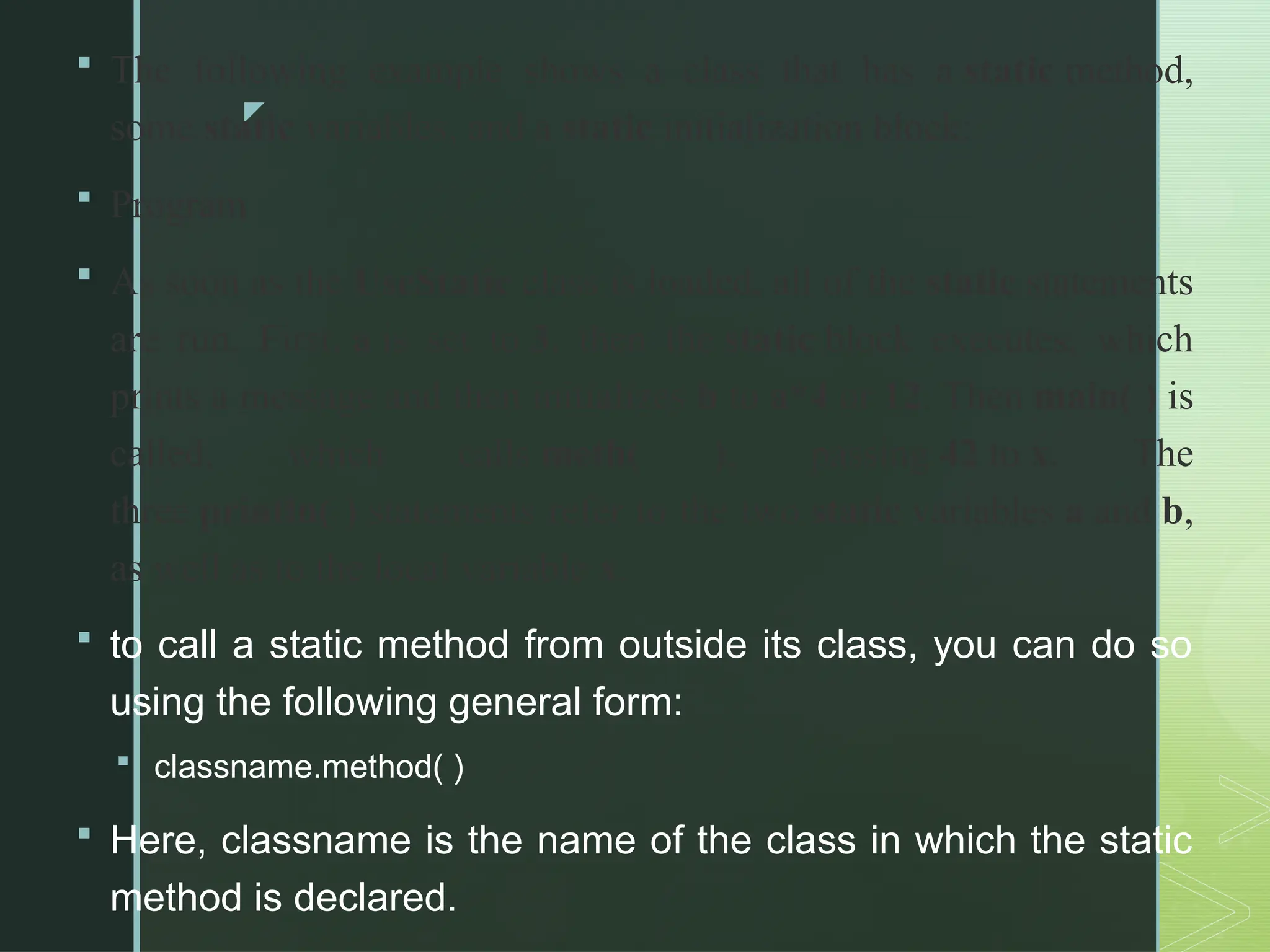The document provides an in-depth introduction to Java classes, covering concepts such as class fundamentals, declaring objects, methods, and constructors. It explains the creation and manipulation of objects, the use of the 'this' keyword, garbage collection, and the finalize() method along with overloading methods and constructors. Additionally, it discusses access control in Java and the importance of encapsulation through access modifiers.

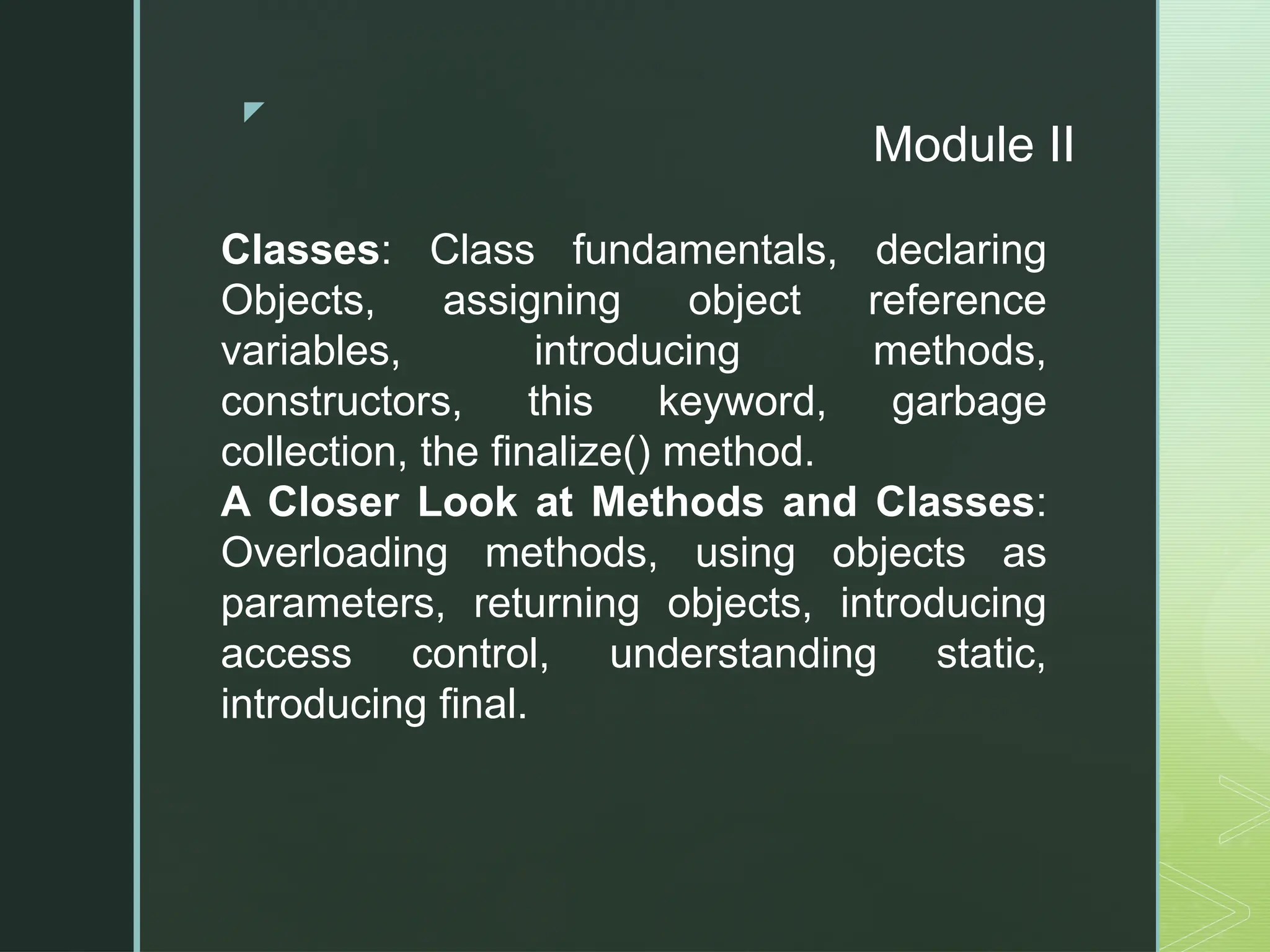
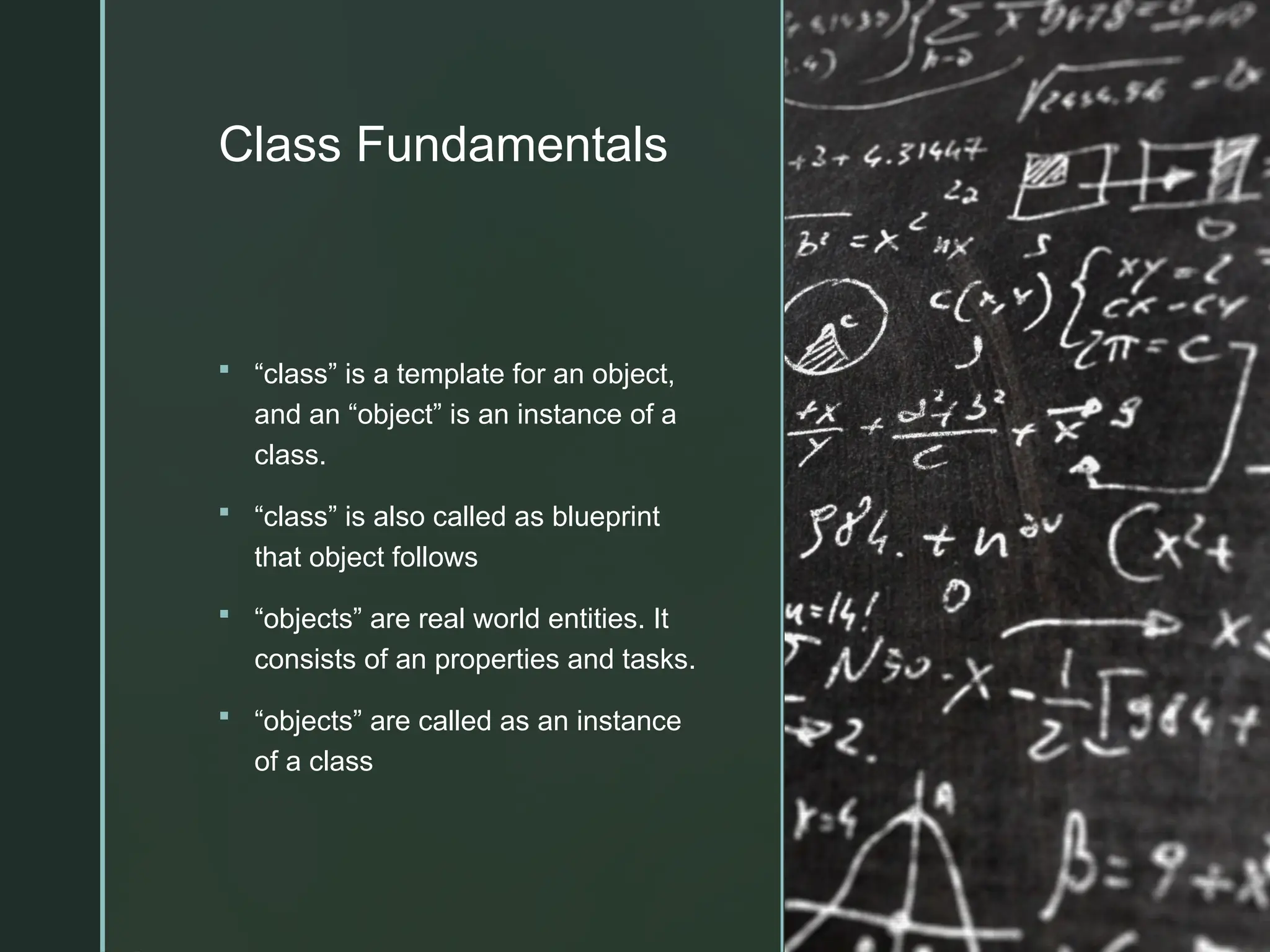
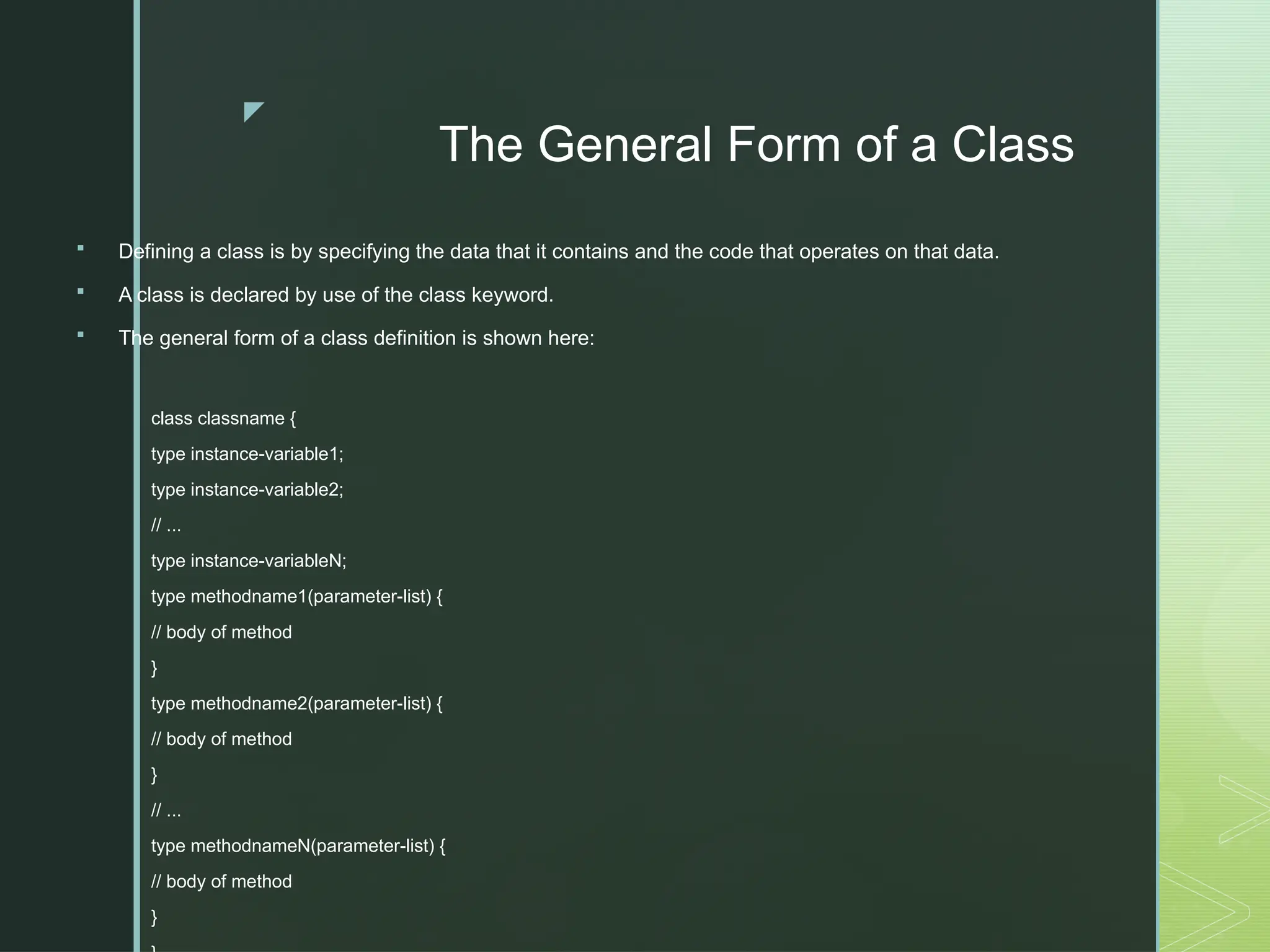
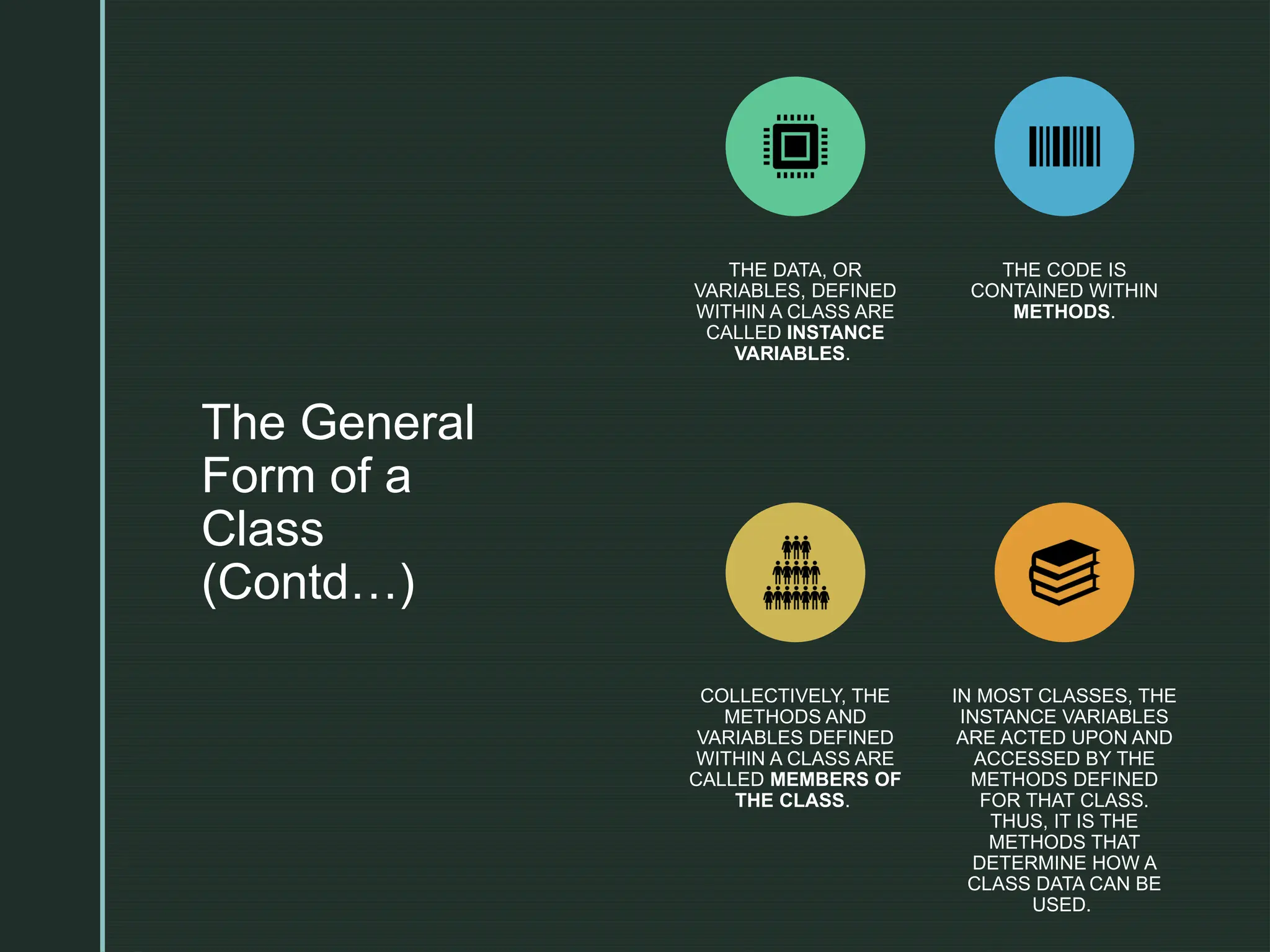

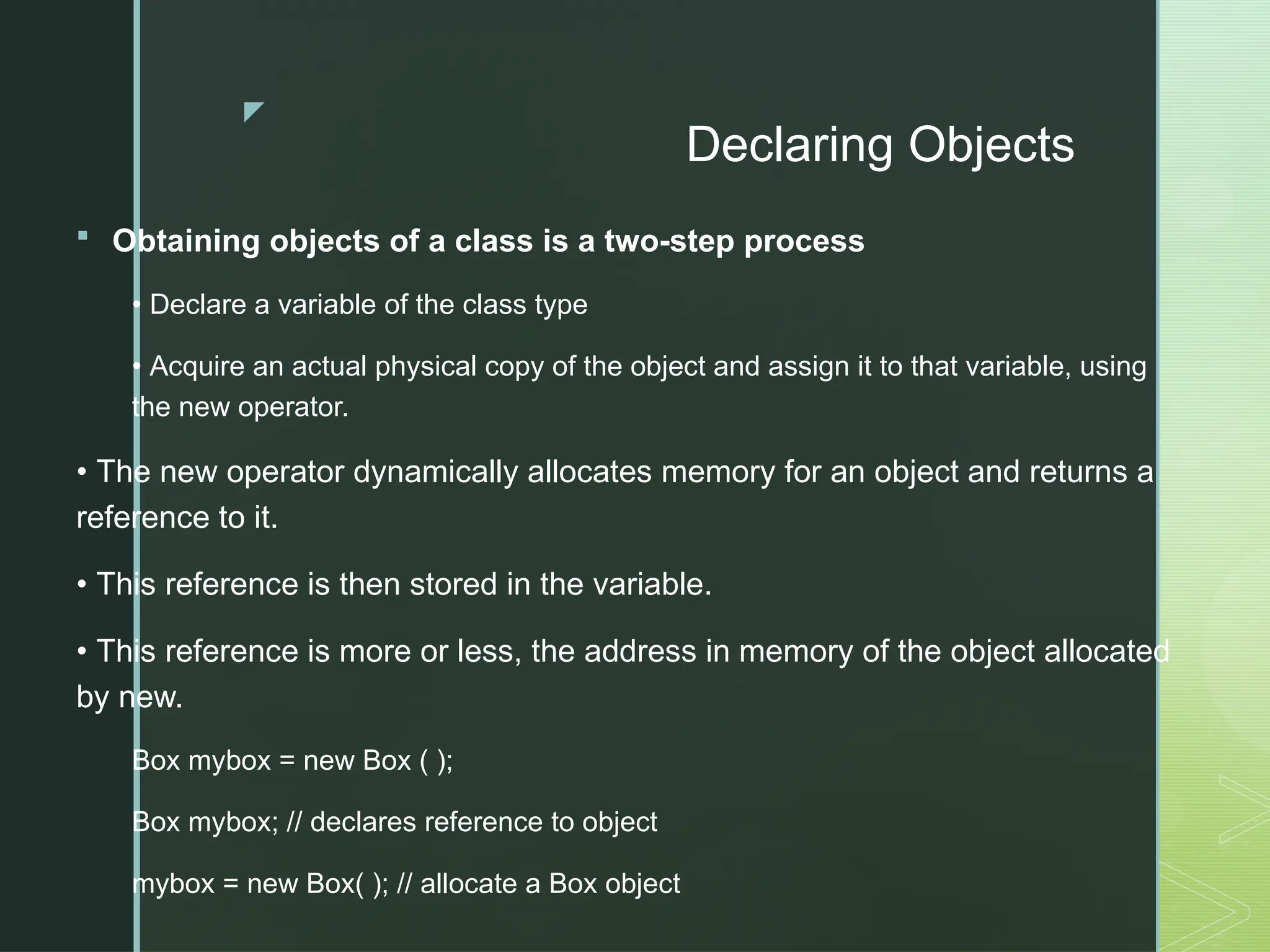
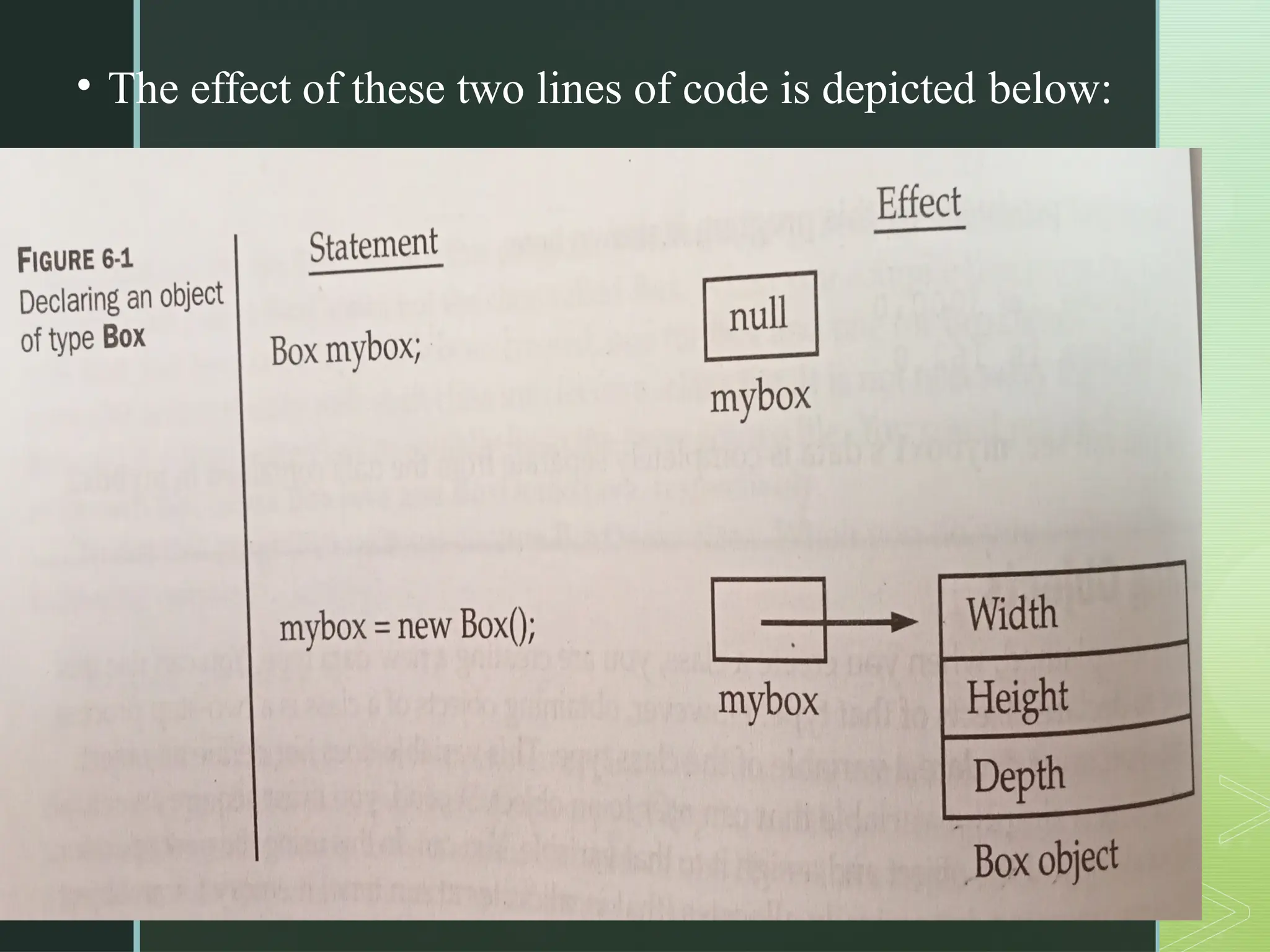
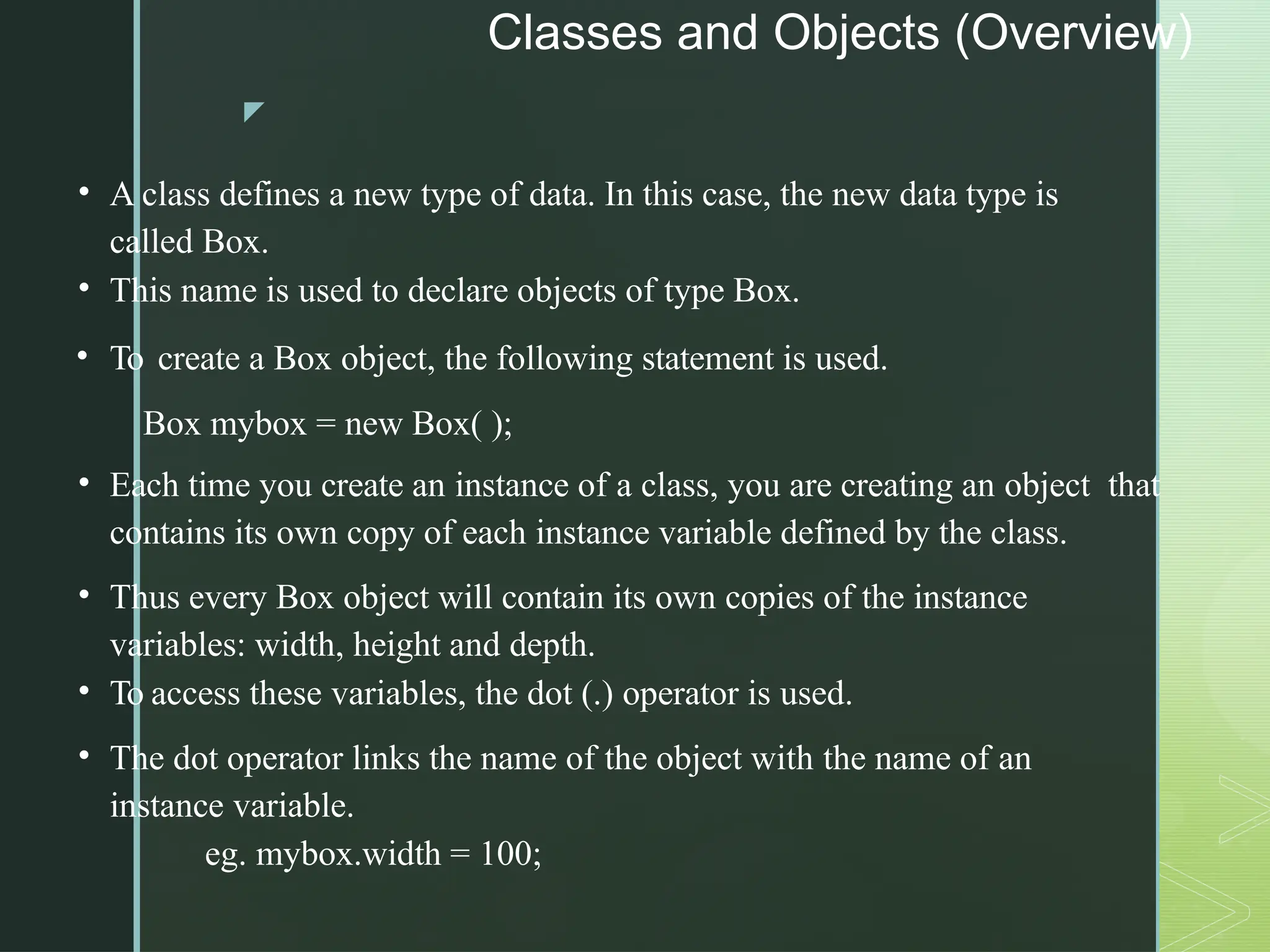
![Program /* A program that uses the Box class. Call this file BoxDemo.java*/ class Box { double width; double height; double depth; }; // This class declares an object of type Box. class BoxDemo { public static void main(String args[]) { Box mybox = new Box(); double vol; mybox.width = 10; //assign values to mybox's instance variables mybox.height = 20; mybox.depth = 15; //compute volume of box vol = mybox.width * mybox.height * mybox.depth; System.out.println("Volume is " + vol); }](https://image.slidesharecdn.com/javamodule2-240903040653-1c1766c5/75/JAVA-Module-2-ppt-on-classes-and-objects-and-along-with-examples-10-2048.jpg)
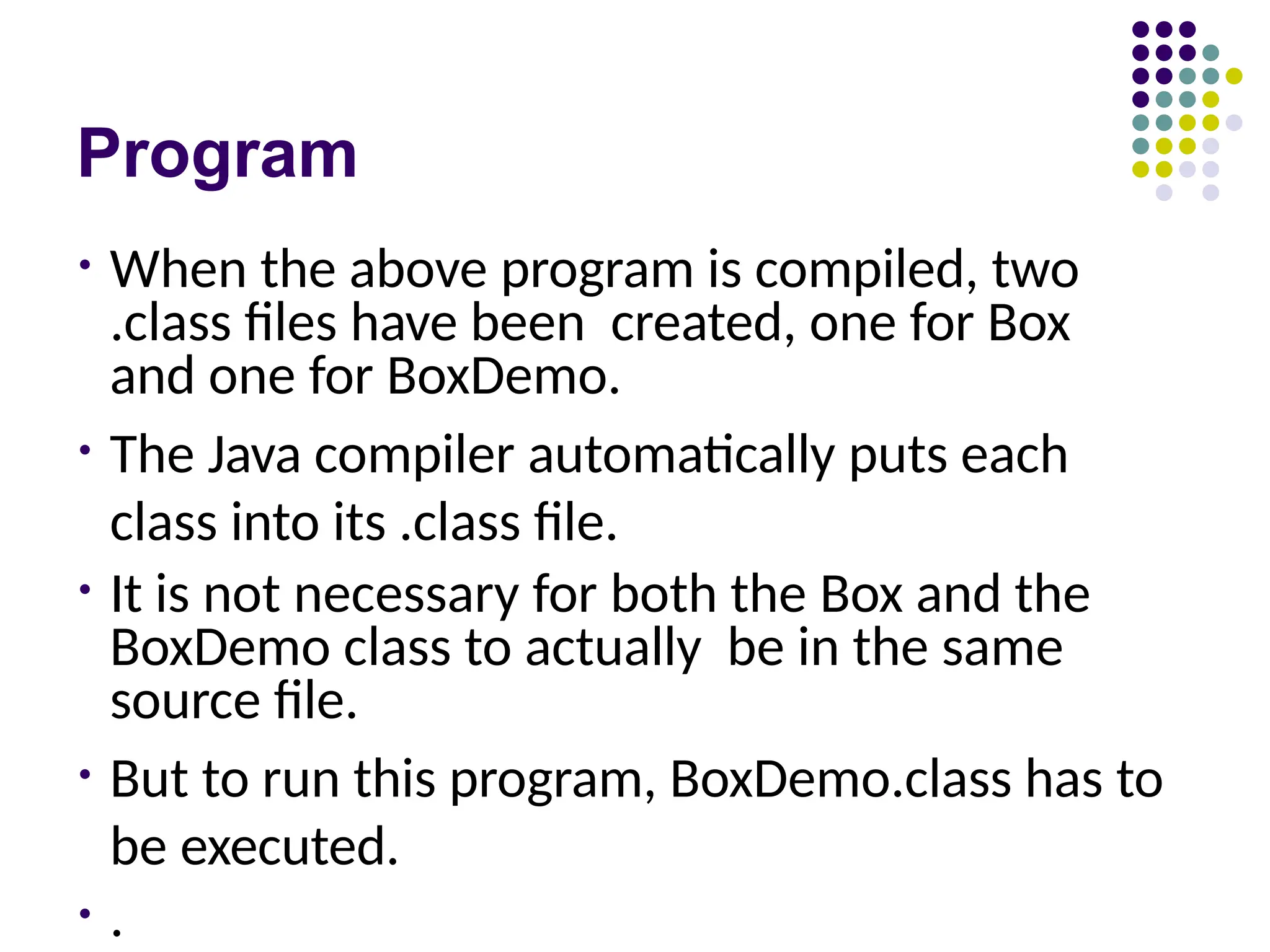
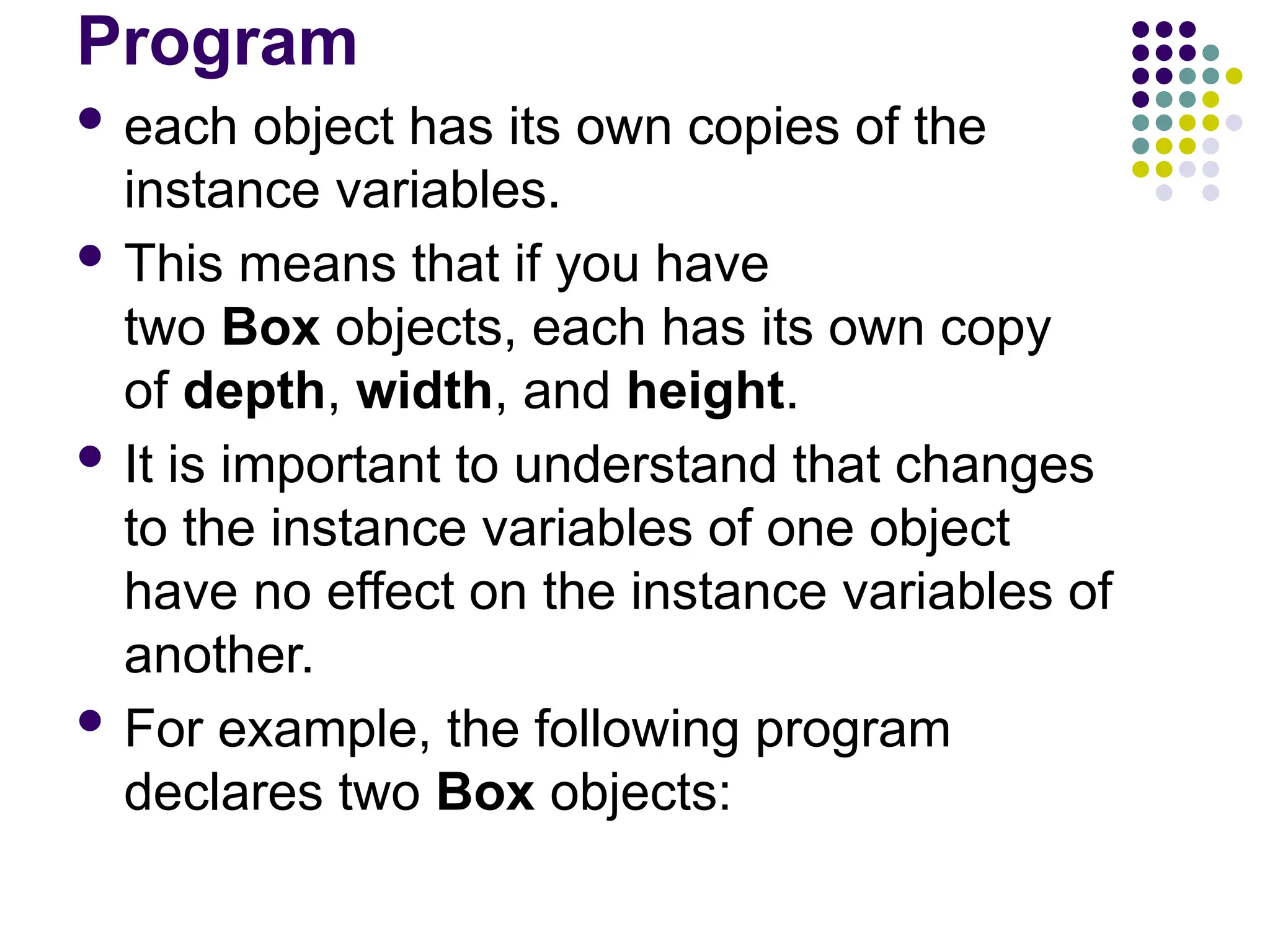
![z Program 13 public static void main(String args[]) { Box mybox1 = new Box(); Box mybox2 = new Box(); double vol; // assign values to mybox1's instance variables mybox1.width = 10; mybox1.height = 20; mybox1.depth = 15;mybox2.depth = 9 /* assign different values to mybox2's instance variables */ mybox2.width = 3; mybox2.height = 6; mybox2.depth = 9; // compute volume of first box vol = mybox1.width * mybox1.height * mybox1.depth; System.out.println("Volume is " + vol); // compute volume of second box vol = mybox2.width * mybox2.height * mybox2.depth; System.out.println("Volume is " + vol); }](https://image.slidesharecdn.com/javamodule2-240903040653-1c1766c5/75/JAVA-Module-2-ppt-on-classes-and-objects-and-along-with-examples-13-2048.jpg)
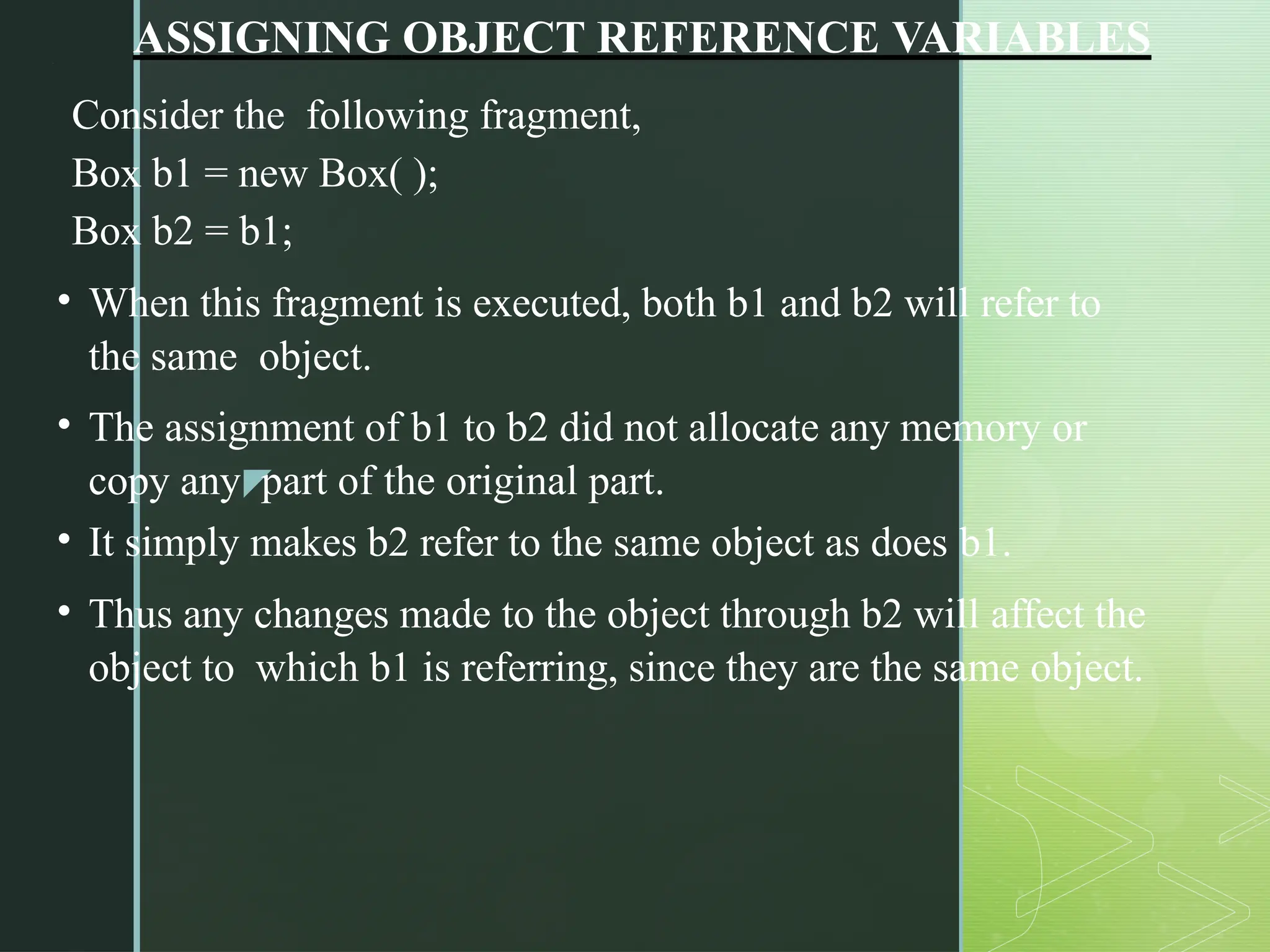
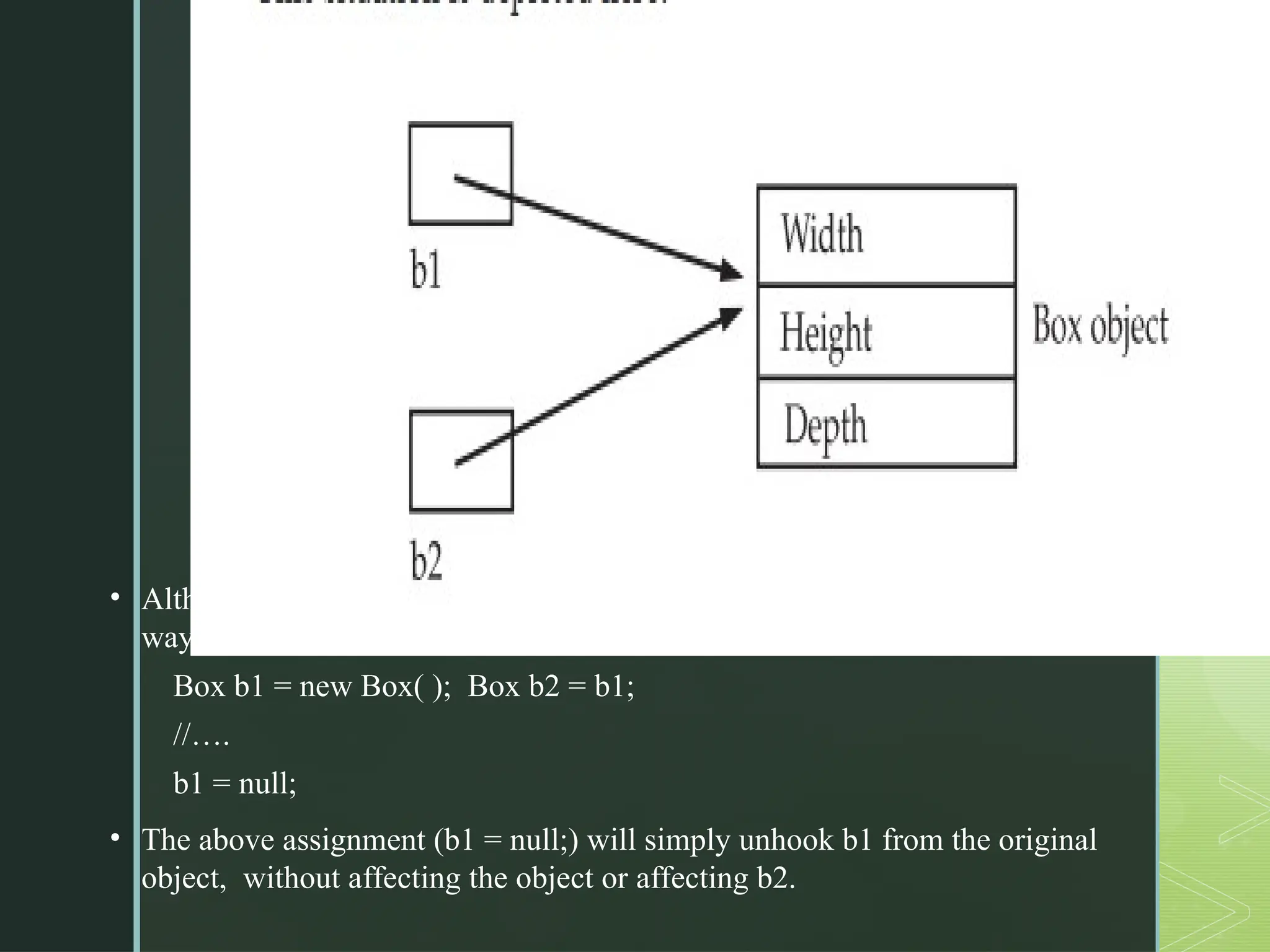
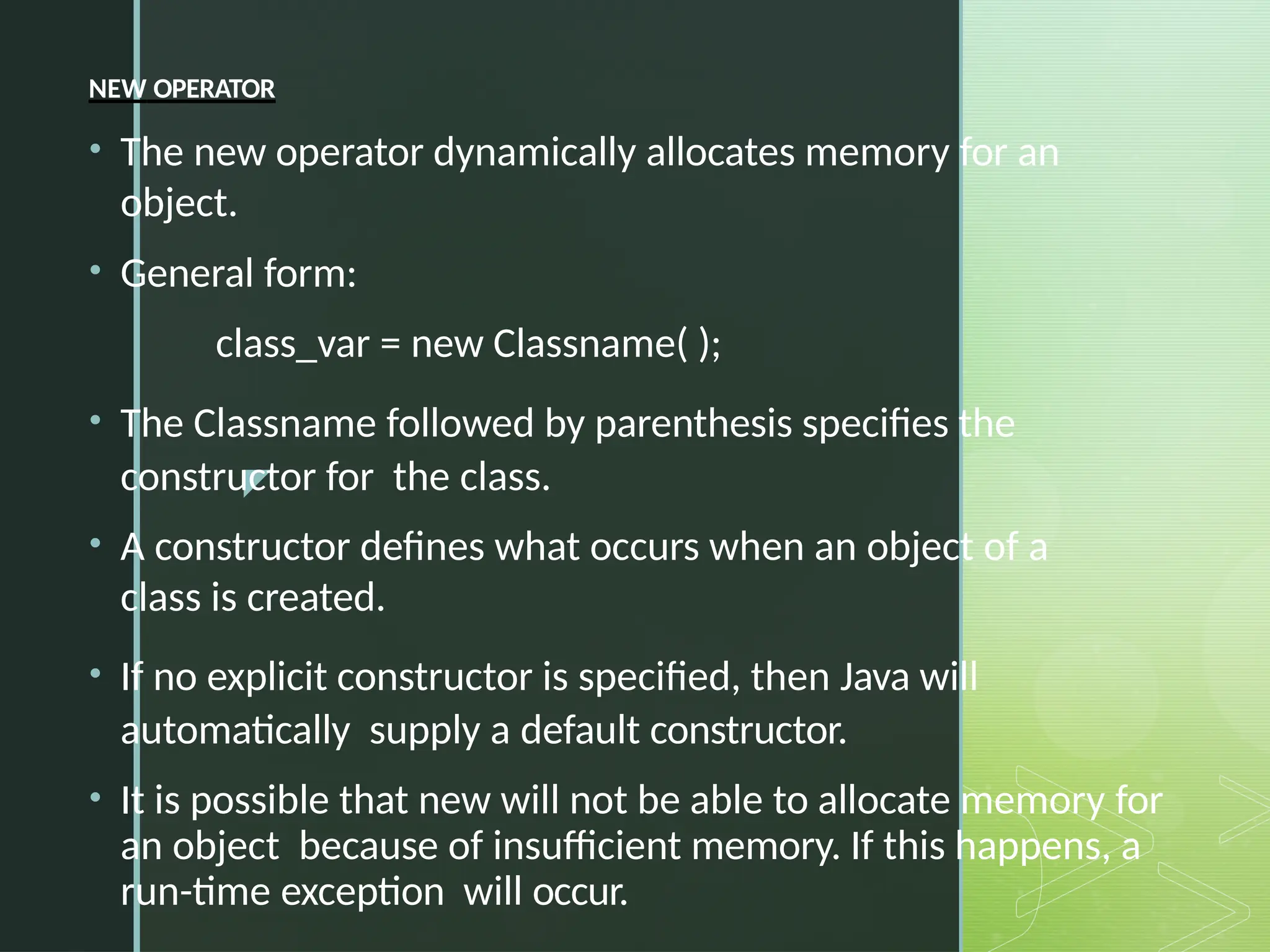
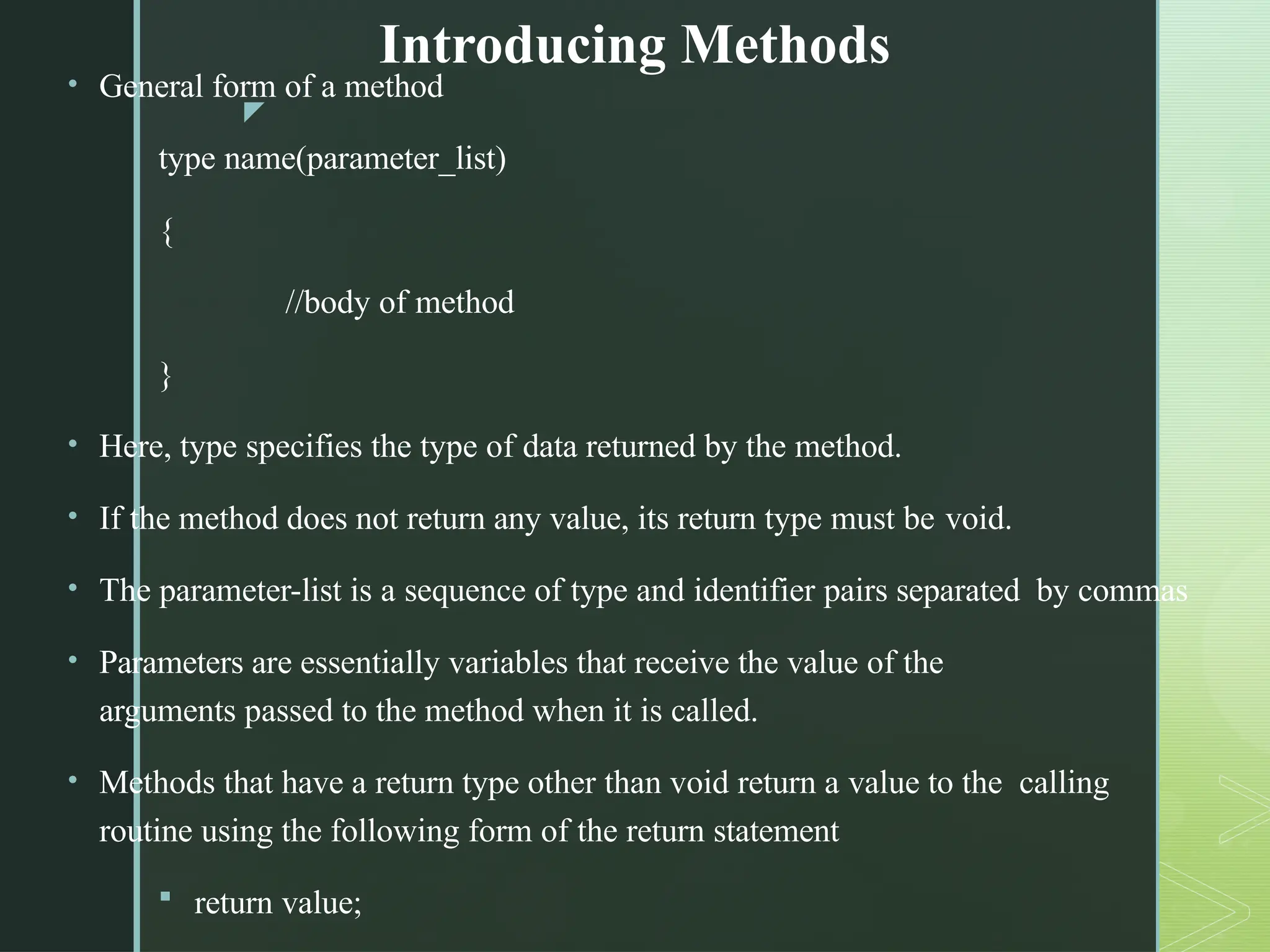
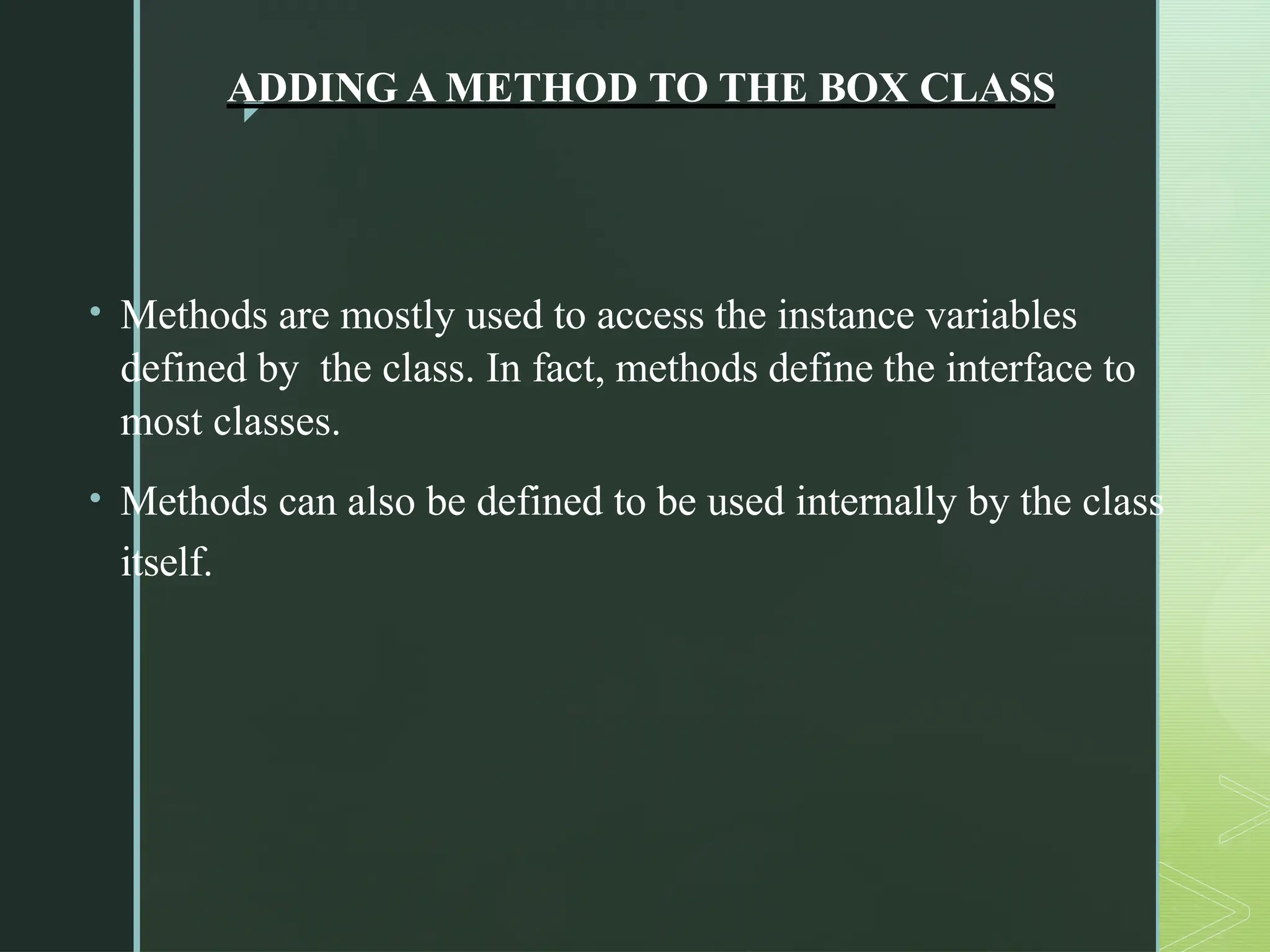
![z ADDING A METHOD TO THE BOX CLASS // This program includes a method inside the box class. class Box { double width; double height; double depth; // display volume of a box void volume() { System.out.print("Volume is "); System.out.println(width * height * depth); } } class Main { public static void main(String args[]) { Box mybox1 = new Box(); Box mybox2 = new Box(); // assign values to mybox1's instance variables mybox1.width = 10; mybox1.height = 20; mybox1.depth = 15; /* assign different values to mybox2's instance variables */ mybox2.width = 3; mybox2.height = 6; mybox2.depth = 9; //display volume of first box mybox1.volume(); //display volume of second box mybox2.volume(); } }](https://image.slidesharecdn.com/javamodule2-240903040653-1c1766c5/75/JAVA-Module-2-ppt-on-classes-and-objects-and-along-with-examples-19-2048.jpg)
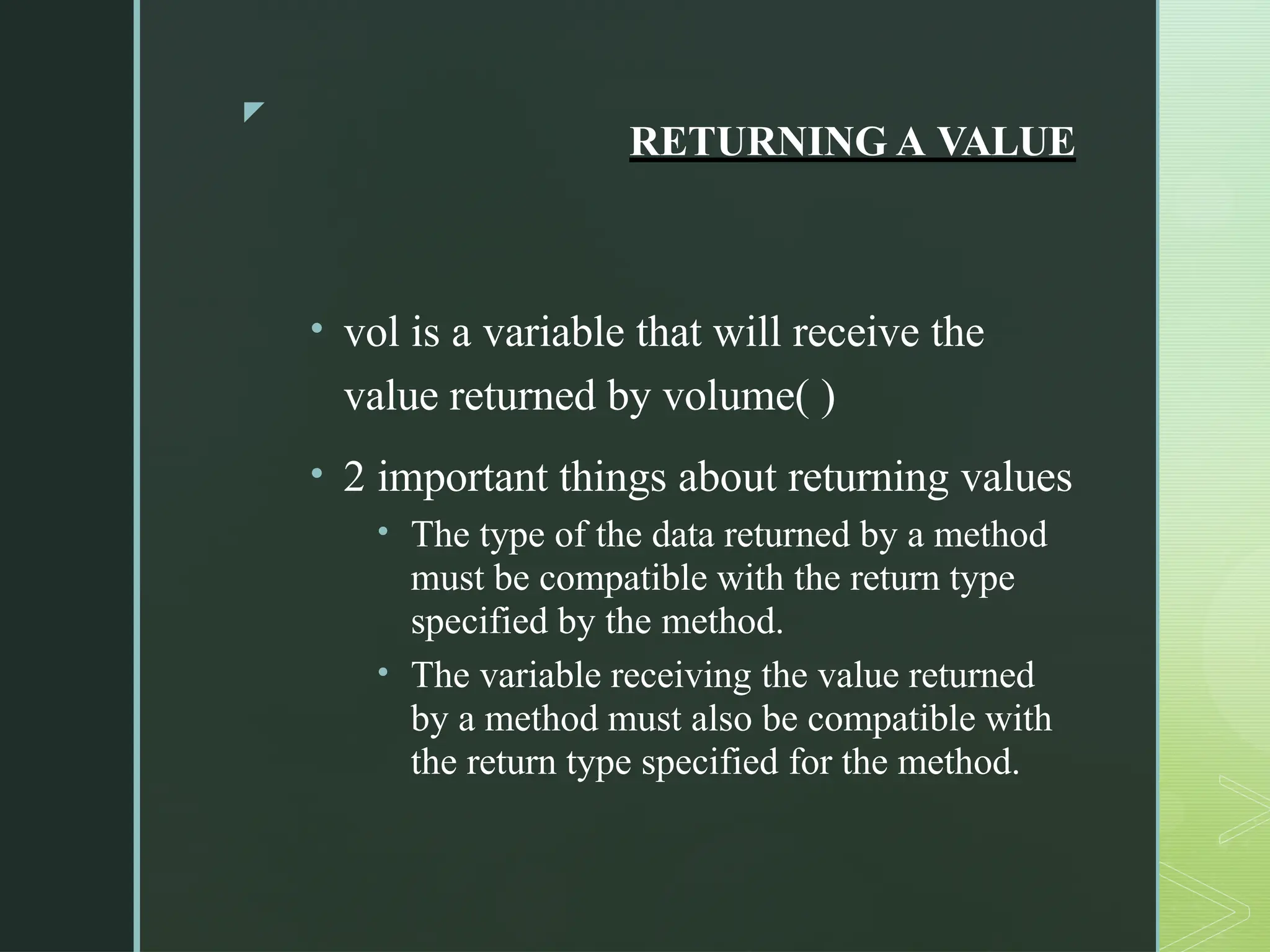
![z RETURNING A VALUE // Now, volume() returns the volume of a box. class Box { double width; double height; double depth; // compute and return volume double volume() { return width * height * depth; } } class Main { public static void main(String args[]) { Box mybox1 = new Box(); Box mybox2 = new Box(); double vol; // assign values to mybox1's instance variables mybox1.width = 10; mybox1.height = 20; mybox1.depth = 15; /* assign different values to mybox2's instance variables */ mybox2.width = 3; mybox2.height = 6; mybox2.depth = 9; //get volume of first box vol = mybox1.volume(); System.out.println("Volume is " + vol); // get volume of second box vol = mybox2.volume(); System.out.println("Volume is " + vol); } }](https://image.slidesharecdn.com/javamodule2-240903040653-1c1766c5/75/JAVA-Module-2-ppt-on-classes-and-objects-and-along-with-examples-21-2048.jpg)
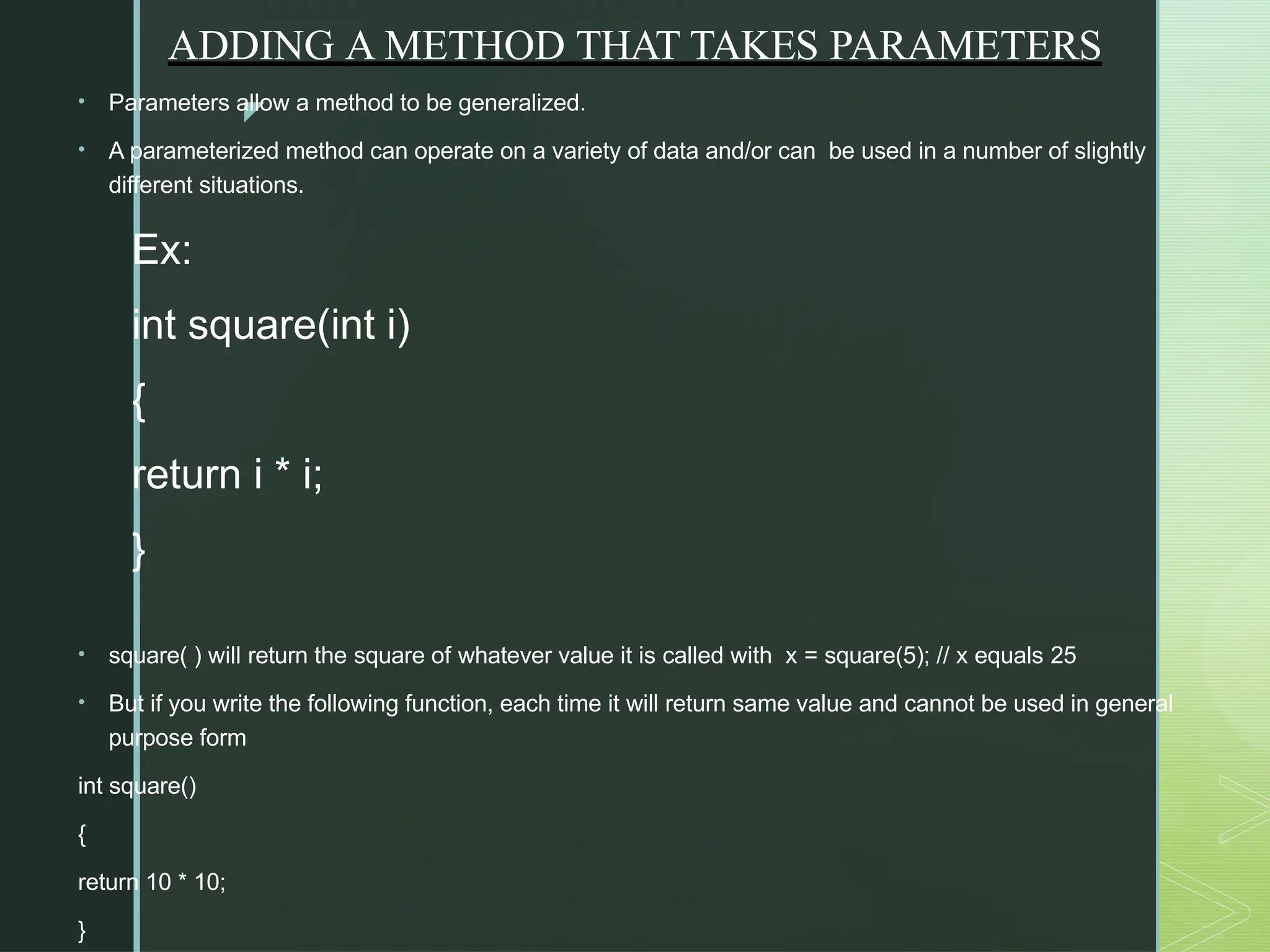
![z • Parameter & Argument • A parameter is a variable defined by a method that receives a value when the method is called. • An argument is a value that is passed to a method when it is invoked • Ex: here 10 is an argument and i is a parameter public class Main { int sq(int i) {return i * i; } public static void main(String[] args) { int ans=sq(10); System.out.println(ans); } }](https://image.slidesharecdn.com/javamodule2-240903040653-1c1766c5/75/JAVA-Module-2-ppt-on-classes-and-objects-and-along-with-examples-23-2048.jpg)
![z //compute and return volume double volume() { return width * height * depth; } // sets dimensions of box void setDim(double w, double h, double d) { width = w; height = h; depth = d; } } class Main { public static void main(String args[]) { Box mybox1 = new Box(); Box mybox2 = new Box(); double vol; //initialize each box mybox1.setDim(10, 20, 15); mybox2.setDim(3, 6, 9); //get volume of first box](https://image.slidesharecdn.com/javamodule2-240903040653-1c1766c5/75/JAVA-Module-2-ppt-on-classes-and-objects-and-along-with-examples-24-2048.jpg)
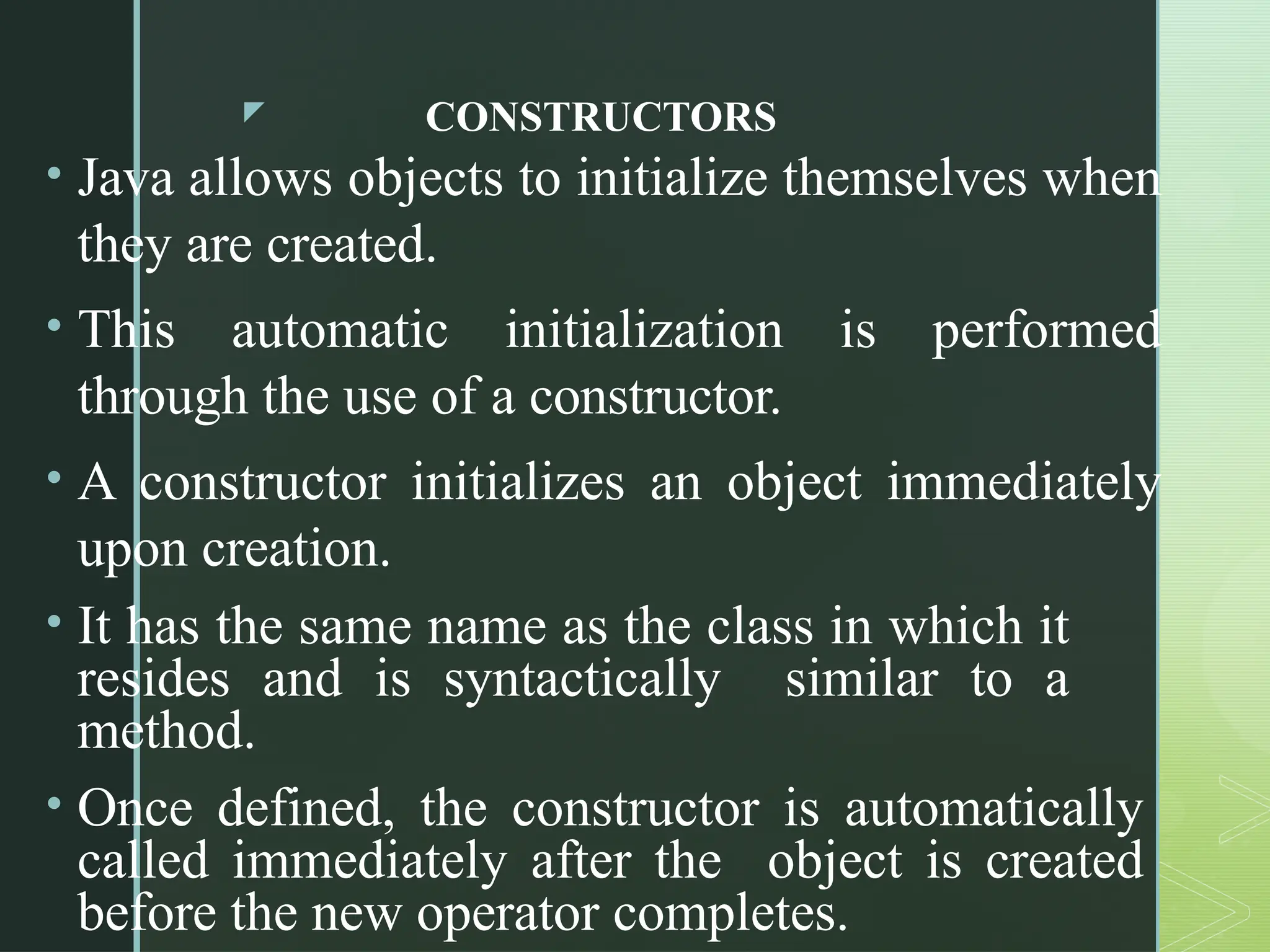
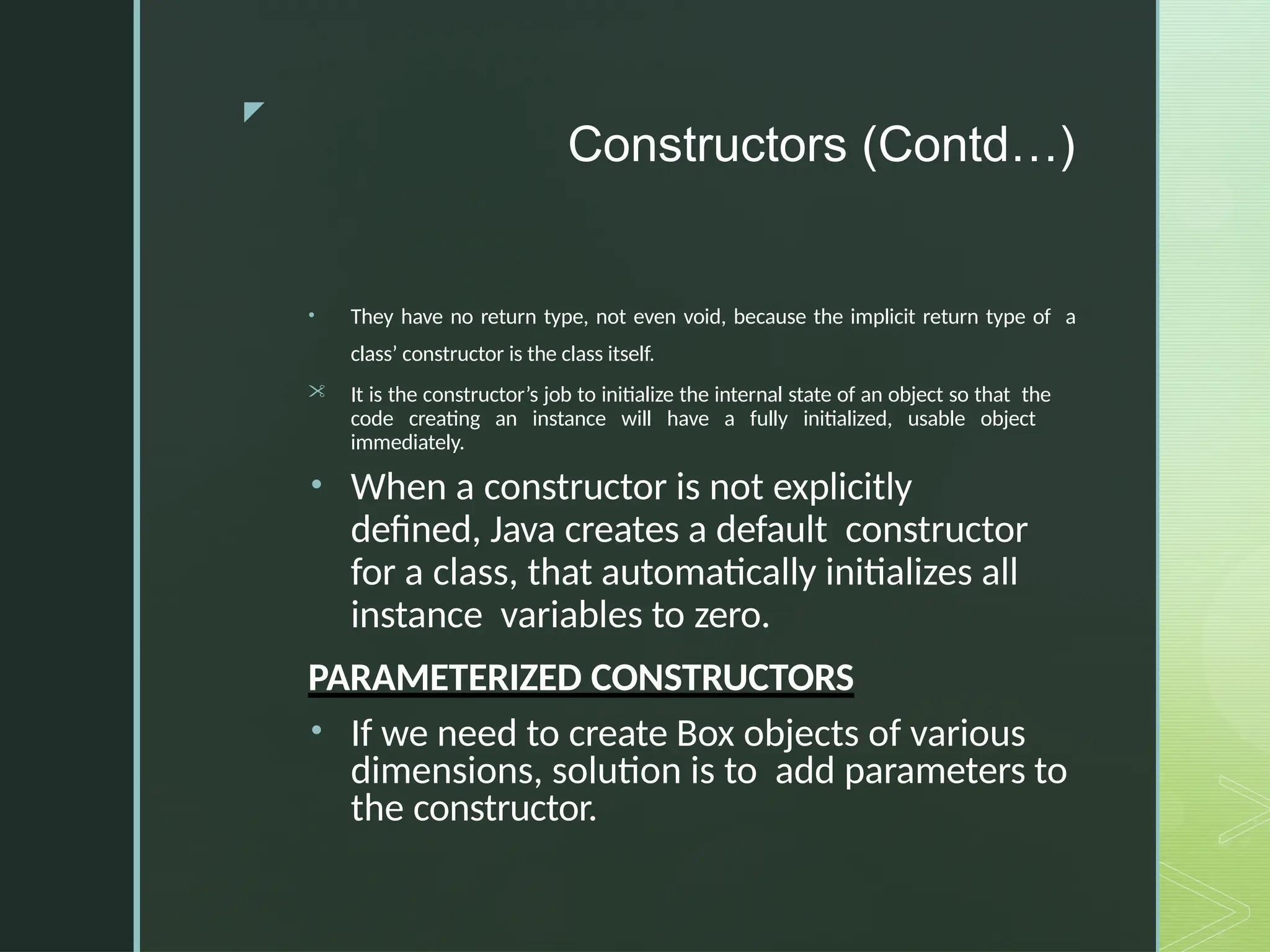
![z { System.out.println("Constructing Box"); width = 10; height = 10; depth = 10; } // compute and return volume double volume() { return width * height * depth; } } class Main { public static void main(String args[]) { // declare, allocate, and initialize Box objects Box mybox1 = new Box(); Box mybox2 = new Box(); double vol; // get volume of first box vol = mybox1.volume(); System.out.println("Volume is " + vol);](https://image.slidesharecdn.com/javamodule2-240903040653-1c1766c5/75/JAVA-Module-2-ppt-on-classes-and-objects-and-along-with-examples-27-2048.jpg)
![z Box(double w, double h, double d) { System.out.println("Constructing Box"); width = w; height = h; depth = d; } // compute and return volume double volume() { return width * height * depth; } } class Main { public static void main(String args[]) { // declare, allocate, and initialize Box objects Box mybox1 = new Box(10,20,15); Box mybox2 = new Box(3,6,9); double vol; // get volume of first box vol = mybox1.volume(); System.out.println("Volume is " + vol);](https://image.slidesharecdn.com/javamodule2-240903040653-1c1766c5/75/JAVA-Module-2-ppt-on-classes-and-objects-and-along-with-examples-28-2048.jpg)
